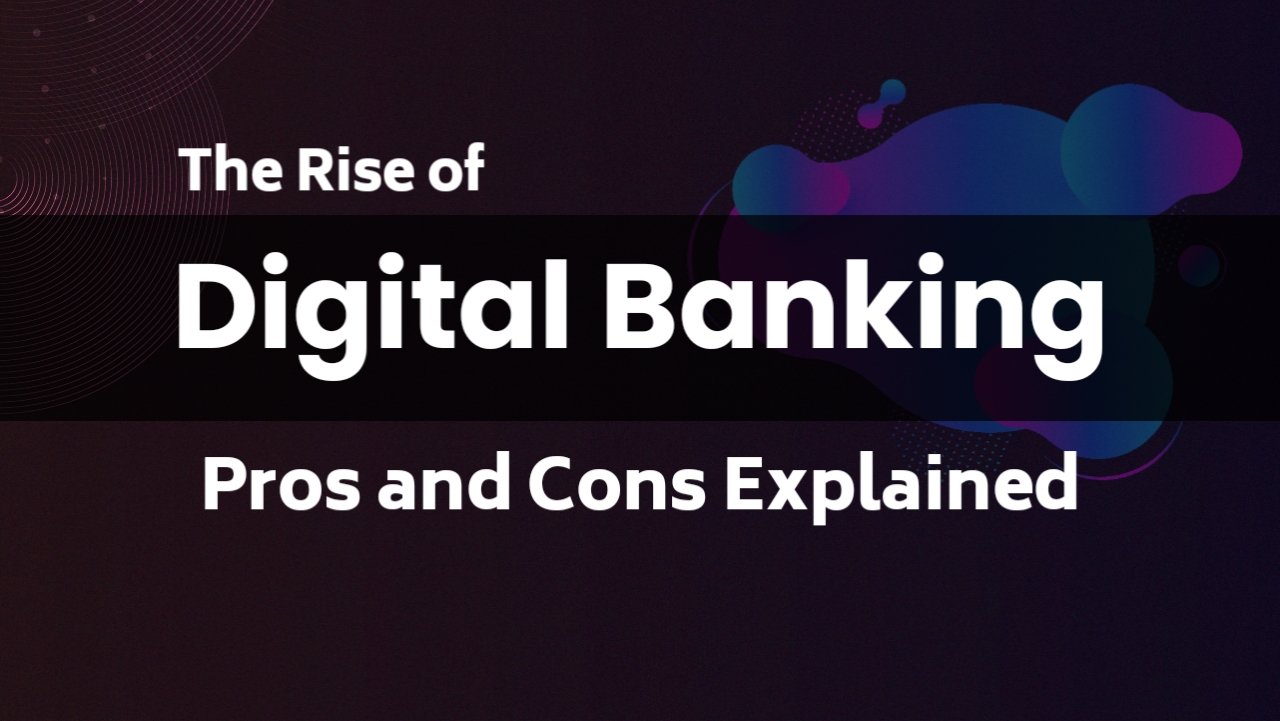In recent years, digital banking has revolutionized the financial industry, offering customers unparalleled convenience and access to banking services. However, like any technological advancement, it comes with its own set of advantages and disadvantages. Understanding both sides can help you make informed decisions about your banking preferences.
What is Digital Banking?
Digital banking refers to the digitization of all traditional banking activities, including money transfers, deposits, withdrawals, loan management, and more, through online platforms or mobile applications. It eliminates the need for physical visits to a bank branch, making financial management accessible anytime and anywhere.
Pros of Digital Banking
1. Convenience and Accessibility
Digital banking allows customers to access their accounts and perform transactions 24/7, regardless of location. This level of convenience is particularly beneficial for those with busy schedules or limited access to physical bank branches.
2. Time and Cost Efficiency
With digital banking, tasks like bill payments, fund transfers, and account monitoring can be completed in seconds. This not only saves time but also reduces costs associated with travel and physical paperwork.
3. Enhanced Security Features
Modern digital banking platforms employ robust security measures, such as encryption, two-factor authentication, and biometric verification, to protect customer data and transactions.
4. Real-Time Updates and Notifications
Customers can receive instant alerts for account activities, such as transactions, balance changes, and suspicious activities. This helps in better financial management and fraud prevention.
5. Eco-Friendly Solution
Digital banking reduces the reliance on paper statements and physical documentation, contributing to environmental sustainability by minimizing waste.
Cons of Digital Banking
1. Cybersecurity Risks
Despite advanced security measures, digital banking is not immune to cyber threats like hacking, phishing, and malware attacks. Customers must remain vigilant to protect their accounts from unauthorized access.
2. Technical Issues and Downtime
Digital banking systems can experience technical glitches or server downtimes, causing inconvenience and disrupting access to funds or services.
3. Lack of Personal Interaction
For customers who prefer face-to-face interactions, digital banking may feel impersonal. Complex issues or personalized advice often require human assistance, which can be limited in digital platforms.
4. Dependence on Technology
Digital banking relies heavily on internet connectivity and electronic devices. In areas with poor internet infrastructure or during power outages, accessing banking services can become challenging.
5. Learning Curve for New Users
Elderly individuals or those unfamiliar with technology may find it difficult to navigate digital banking platforms, creating a barrier to adoption.
How to Maximize the Benefits of Digital Banking
To make the most of digital banking, customers should adopt best practices that enhance security and usability:
- Use Strong Passwords: Create unique and complex passwords for your banking accounts and change them periodically.
- Enable Two-Factor Authentication (2FA): Add an extra layer of security to your account to prevent unauthorized access.
- Stay Updated: Regularly update your banking apps and devices to ensure you’re protected against the latest security vulnerabilities.
- Monitor Accounts Regularly: Keep an eye on account activity and report any suspicious transactions immediately.
- Educate Yourself: Learn how to recognize phishing attempts and other cyber threats to avoid falling victim to scams.
Future of Digital Banking
As technology continues to evolve, digital banking is expected to become even more sophisticated. Innovations like artificial intelligence (AI), blockchain, and open banking are likely to enhance customer experiences and security measures further. Additionally, financial institutions are investing in personalized services to bridge the gap between digital convenience and human interaction.
Conclusion
Digital banking has transformed the way we manage our finances, offering unparalleled convenience, efficiency, and accessibility. However, it’s essential to remain aware of its potential drawbacks, particularly in terms of cybersecurity and technical reliability. By understanding the pros and cons, you can confidently embrace digital banking while taking necessary precautions to protect your financial well-being.
